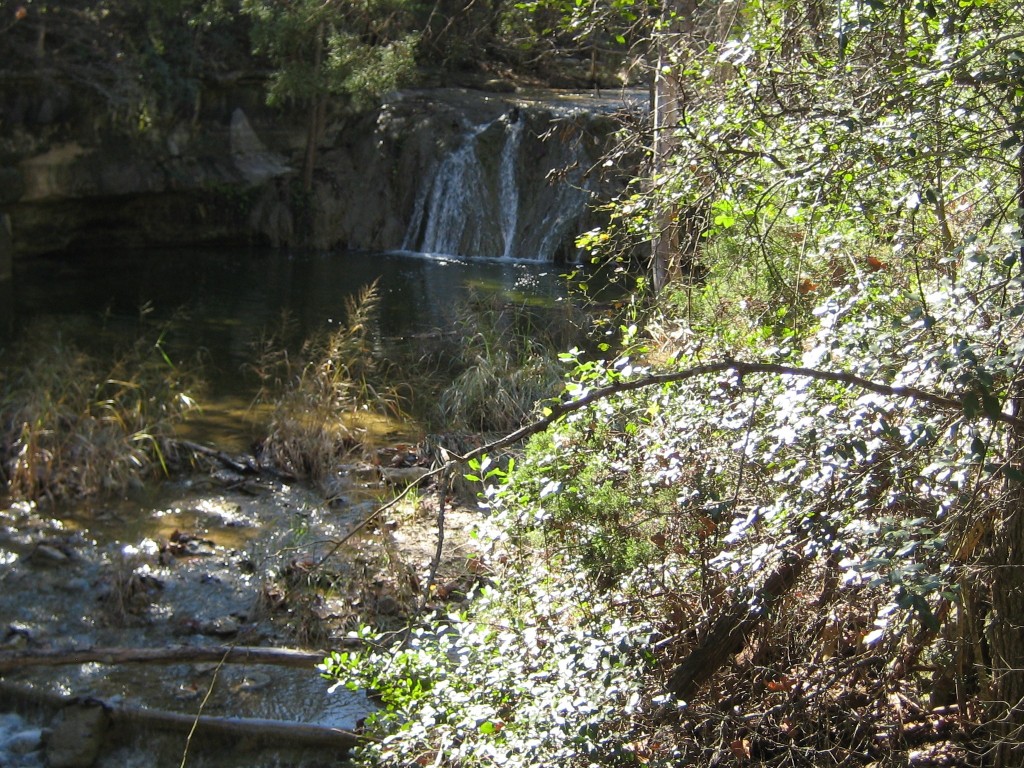It’s a little bit like returning to the “old Austin” so many longtime residents pine for. Just 20 minutes from downtown, I turn east off of North Capitol of Texas Highway into the Wild Basin Wilderness Preserve. A dusty gravel drive replaces the wide lanes of relentless, rushing traffic. I’m surrounded by native vegetation, and soon lose sight of the hillsides smothered by luxury homes. Over the last few decades, change has bulldozed its way through Austin. Much of that change has meant the heart-breaking loss of open space and natural beauty, cherished landmarks and affordable housing, but one very valuable resource of Austin remains – women and men full of creative energy and love of the land still call this place home.
Surrounded by dense residential and commercial development, these 227-acres remain intact and untouched today thanks to the foresight of a small group of such Austinites. Beginning in the early 1970s, and despite years of setbacks, their hard-fought grassroots campaign ultimately succeeded in preserving this land as a resource for environmental education and recreation. And while the preserve has experienced change along with the rest of the city, it has managed to do so without sacrificing its original mission. It remains open to the public, provides essential habitat for the endangered Golden-cheeked Warbler and Black-capped Vireo, contributes to improved air quality and watershed health, and has also expanded its role to serve as an extension of St. Edward’s University.
Another example of Austinites’ progressive initiative, the 2009 establishment of St. Edward’s Creative Research Center offers innovative opportunities for student research. “It’s a place where students can get involved in scientific research projects that connect them to real-world environments, as well as creative projects that help bring the preserve to life.”says Dr. Amy Bellaire, Natural Resources Manager and Coordinator of Education and Research at Wild Basin. “Right now students are working on a variety of cool projects that cover so many interesting angles!” In addition to the natural sciences, student research has explored a variety of academic disciplines, included forensic sciences, the arts, policy studies and local government, education, and business.
My early morning visit allows for a serene and solitary hike along the 2.5 miles of well-maintained trails, but many days bring more visitors enjoying a variety of public educational programs, guided hikes, full-moon yoga classes, and volunteer stewardship opportunities. As I walk through dappled light, I gradually descend through evergreen woodlands of Live Oak and Ashe Juniper toward Bee Creek, Wild Basin’s main waterway. Occasional punctuations of fall color catch my eye. Flame Leaf Sumac lives up to its dramatic name, Cedar Elms display subtle hues of gold and russet, and the bright red berries of Yaupon Holly contrast strikingly with its deep green foliage. Nearing the end of my descent, I hear the gentle flow of Bee Creek and soon come to rest on a bench overlooking a small waterfall. Spilling generously over limestone ledges thanks to recent rains, the falls are surrounded by lush water-loving species including cottonwood and sycamore trees, maidenhair ferns and switchgrass.
“Wild Basin is a fantastic place for people to learn about our native ecosystem and enjoy nature, all within a short drive of downtown Austin,” says Bellaire. “As our world becomes increasingly urbanized, places like Wild Basin are important for connecting people with their environments. I think of Wild Basin as a place where people of all ages can learn about native flora and fauna, engage in environmental stewardship, become citizen scientists, and simply enjoy being in nature.”
Although I continue exploring for only a couple hours longer, Wild Basin’s trails are open to the public seven days a week from sunrise to sunset. Admission is free, while a suggested donation of $3 is appreciated. Visitor amenities include a welcome center (open weekdays from 9am till 4pm) with a small exhibit, microscopes to investigate natural history specimens, comfortable seating with reading material and field guides, a sightings board listing wildflowers in bloom and recent wildlife encounters, and restrooms. Dogs and bikes are prohibited in the preserve.
Following an interconnected network of looping trails, I cross the creek, climb the opposite slope of the canyon and finally return to my starting place. Along the way are a few broad vistas, but I especially appreciate the beauty found in smaller details – the twisted, overlapping and peeling juniper trunks; the layers of exposed limestone spotted with velvety moss; the scattered arrangements of autumn leaves leading me forward along the trails. I’m also glad to see evidence of Wild Basin’s partnership with St. Edward’s Creative Research Center – motion activated wildlife cameras, occasional flagging on trees, a poster announcing an upcoming art exhibit. For me, these sights are welcome reminders that Austin has not lost its most valuable resource – its community of creative, resourceful, and committed women and men.




